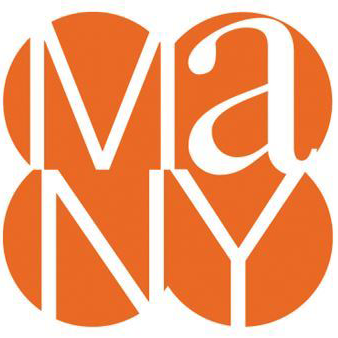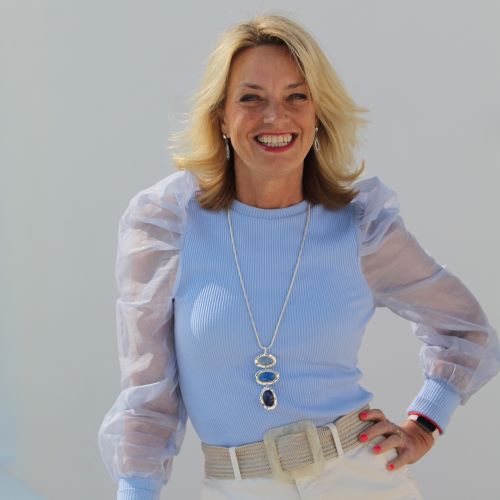MANY Episode 5
Episode 80: Museum Series Part 5
We recently attended the 2018 Museum Association of New York annual conference and spoke with attendees from all over New York State representing all types of museums and cultural institutions. I found the conversations enlightening and inspiring. Through this series, I hope you will find a new perspective on this important segment of the tourism industry and how museums and cultural institutions are working to build community, reach audiences beyond their local markets and creating new programming and events that enhance the visitor experience.
In this episode, I share my conversations with:
- Scarlett Rebman, Grants Officer with Humanities New York
- David Gerber, Chair of the Board of Trustees for the Museum of Disability History
- Cordell Reaves, Historic Preservation Programs Analyst for New York State Office of Parks, Recreation, and Historic Preservation
Humanities New York: Attracting New Visitors
Scarlett, thank you so much for taking some time out to join me today at the Museum Association of New York Conference.
Absolutely. Happy to do so.
I think we’ll just dive right into the first question that we’re exploring here today, which is, how do you attract new audiences within your region?
Humanities New York is the state partner of the National Endowment for the Humanities, and we’re a statewide organization. Part of the work we do is supporting cultural organizations, museums, community organizations around the state, and giving support to them to attract new audiences to their locations.
We also do a variety of direct programs ourselves and we seek to attract new audiences when we have special events. We do a variety of panels around the theme of democracy and dialogue. We’ve partnered with Federal Hall in Lower Manhattan to implement those programs. We start with the choice of topic and the choice of theme and try to choose issues that really can promote civic dialogue and engagement and get people in a room together and get people talking and thinking about issues. Over the past year, we’ve done issues such as reflecting on the legacy of the women’s suffrage centennial, something that was very relevant in 2017. We did a panel on the legacy of the civil rights movement, and obviously has ongoing resonance today with the issues that our society is dealing with in New York state. And most recently we did a panel called “After Attica” that talks about mass incarceration and the criminal justice system. So we really strive to choose topics that resonate, and then also speakers who are diverse and can really bring different perspectives to those topics.
I think you make a great point because the programming that you select also is going to help attract those audiences, right? And finding those kinds of topics that are most important in that moment of time, is that correct?
Exactly. And a group that comes to one program may not be the same group that comes to another program, but that’s okay. We want to reach all New Yorkers and hopefully provide content that’s appealing to everyone at some point in time.
Yeah, that’s really fantastic. You mentioned that you work with organizations all across the state, and that’s through your grant program?
Yeah, we offer grants and direct ready-to-made programs that we offer, such as Reading & Discussion groups and Community Conversations, where we provide the toolkit and resources to implement those. And then our grants program is for museums and cultural organizations that are ready to design their own public programming. Within that, we have a Vision Grant that is geared all towards planning programming. Groups can use that to reach new audiences. They can do focus groups. They can reach out to their community members, either folks who are already coming or folks who haven’t come to their institution. Ask them, “What kind of programming do you want to see?” And that’s kind of the key first step for reaching new audiences is really tapping into your community and seeing what are people interested in. What kind of programming do people need and want? And so, we give a little bit of support to make that happen, because it’s not easy when you have a small staff at a museum, to always take the time to do that initial step.
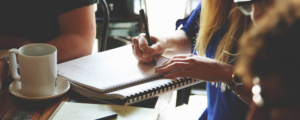
[bctt tweet=”“The first step in reaching new audiences is really tapping into your community and seeing what are people interested in. What kind of programming do people need and want? ” – @scarlettrebman #WhyCollaborate #podcast”]
Yeah, and I think that’s so important because I know especially with some grant programs the grants are there to pay for something that’s already been figured out, right? And to be able to take advantage of something like this where you can actually do some visioning and some planning and do that legwork, I think will really set a foundation for much more successful programs, is that correct?
Yeah, absolutely. That’s the hope and that’s the goal. And then after that we have the Action Grant as well for the implementation stage. So we do give the support for the next step as well. But we try to help along the way in that process.
Humanities New York: Being a Community Anchor
Yeah, that’s really fantastic. Thinking about your organization, one of the things that we’re kind of exploring here is how museums can be a community anchor. Do you have any thoughts on how either through your programming that you do in New York, or through maybe some of your grantees that you work with across the state, how museums and cultural institutions can really be that community anchor?
Yeah, that’s a great question. I think being open and accessible to the community is a real key. Helping the community see museums not as elite institutions, but as spaces that are really for the people who live and work there. I see many, many institutions across New York state are really committed to making that happen. Sometimes there might be — if groups aren’t coming to your brick-and-mortar space — I’ve seen museums and arts organizations go out into the community to deliver programming. Thinking outside of the box and really going to meet people where they are, and then maybe later they will come back to the bricks-and-mortar institution. But just thinking outside of the box, thinking creatively about how you can reach the community, and again, what are those needs? I’ve definitely seen inspiring work across the state.
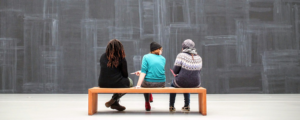
[bctt tweet=”“Help the community see museums not as elite institutions, but as spaces that are really for the people who live and work there. ” – @scarlettrebman #podcast”]
I think that’s a really great way to put it, is kind of thinking outside of the box, but then this whole idea of being open and accessible, and … maybe breaking down those barriers, which is kind of what your organization’s all about, isn’t it?
Exactly. Making the tools of the humanities accessible to all New Yorkers. And when we talk about barriers to access — a lot of groups strive to offer low-cost or free programming — but just because a program is free doesn’t necessarily mean that is accessible or that the community will come. So there is other work that has to be done to make people feel comfortable in these spaces. And it comes down to: Is there childcare? Are there things that parents and children can do together? Or can you offer programming where there’s something for the kids to do and something else for the parents to do at the same time? Just thinking through all the barriers that might be inhibiting people from coming. Cost of travel, childcare, those sorts of things.
Humanities New York: Future Outlook
Yeah, I think that’s great. So, looking ahead, what are some of the goals for your organization in the next three to five years?
Our mission is to strengthen civil society and the bonds of community, and we have a new strategic plan for the next three years that’s going to help us do that. You can check out some of those goals on our website, but we want to continue to help folks use the tools of the humanities to engage in civic dialogue. We really think our cultural diversity in New York state is one of the wonderful strengths of this state. We want to make sure that in these times [in which] we can be politically divisive, we think conversation and thoughtfulness, and appreciating different perspectives can really help bring us together. And to reflect on what we value, and to make a change. And so, we’re striving to gear our grants and our programs to help promote that dialogue.
That’s fantastic. I love that. Well, I really appreciate you spending some time with us today. And we’ve definitely learned a lot. I know our listeners will learn a lot from you. Thank you for being with me.
Thank you.
Museum of Disability History: Attracting New Visitors
Such a great conversation with Scarlett, I really appreciate her view on how her organization can help facilitate conversation and thoughtfulness and appreciation for different perspectives. Next, I talk to David about how the Museum of Disability History is about educating the public about what disabilities are and how they have been regarded in the past and the present and in different cultures and societies.
David Gerber, Chair of the Board of Trustees for the Museum of Disability History.
David, thank you very much for taking some time out at this conference, I’m really looking forward to learning from you today.
It’s my pleasure.
We’ll just dive in with the first question. I’m wondering how you attract audiences within your region?
Given the nature of our interest in disability, we have a vast audience that’s ready-made for us in the disability community, which includes service providers, people with disabilities, their families, and significant others, friends, and as well, people in medical and rehabilitation fields. From the beginning, we have people who are interested in what we do. A problem for us has been going beyond that.
There are two matters that we have to confront. One is that disability is not something that people conceive of as having a history. That appears confusing to people, and the other is an aversion of people to thinking about disability. Not everyone and the world has changed greatly in that regard, but disability is not something that’s attractive to most people to think about.
Our museum was founded in part with those aversions in mind as a way of educating the public about what disabilities are, how they’ve been regarded in the past and in the present in different cultures and societies, and making it easier for people with disabilities to therefore integrate into the community, and be part of the community.
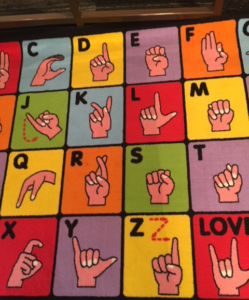
[bctt tweet=”“Our museum was founded in part with those aversions in mind as a way of educating the public about what disabilities are..and making it easier for people with disabilities to be part of the community.” – David Gerber #WhyCollaborate #podcast”]
Yeah, I think that’s very interesting because you started with “We have a built-in community of folks who have an interest and an affiliation with this subject,” but then you have these other audiences, who as you mentioned, might have an aversion to that. How have you bridged that gap? Are there things that are working for you, or that you’re thinking about doing to address that?
We have done a number of things in the schools. We’ve been involved in Disability History Month and influencing the K through 12 curricula. Disability is something that has to be taught in New York state schools at the time of Disability History Month. We also have a puppet show that we sponsor, “Kids on the Block,” that goes into the schools and other community venues, and has an anti-bullying message.
We have a film festival in the fall every year that’s widely marketed to the public and sponsored by the museum. The intention of the film festival is to bring really captivating feature films into the community to introduce people to those narrative dramatizations of disability, and comedies as well, all sorts of films. We also have, in that film festival, international films, so we also spread the idea that disability is something that has a worldwide interest and appearance, and that disability is looked at differently in different places in the world.
I think that those are some really great examples, and can you tell me, when is Disability History Month?
It’s in October.
It’s in October, okay, and I love how you’re bringing it into the schools and working both with the curriculum, but then also with a puppet show. I actually have some students in the New York state school system, and I know, especially in terms of bullying, that that’s a huge subject, right? That they’re constantly exposed to at school, so I think that’s fantastic.
Then when you started to talk about the film festival and bringing in [a broader audience] that would be interested in film, it actually made me think about the TV show that’s out now, Speechless.
Yes.
Have you seen an uptick in interest, or at least maybe more openness, to exploring this topic since that’s come out on network TV?
Well, not that’s been reflected in what we do. Certainly among ourselves, when we have committee meetings and we have our board meeting, we have discussed it. We have a major fundraiser coming up in May to mark our 20th anniversary, and we have some endorsements that were filmed from the characters, the actors who play in Speechless, that are going to be shown during our fundraiser.
Museum of Disability History: Reaching Beyond the Regional Market
That’s fantastic. We’ve talked about your regional audience, and actually, you’ve touched on it a little bit in talking about how this subject is an international and worldwide interest, but how are you reaching beyond that regional market?
Beyond the regional market is complicated for us. On the one hand, we have to market so that people coming to Buffalo know where we are and who we are and what we do, and to that extent, we do the standard marketing and passing out our brochures at Thruway stops and other tourist venues, hotels. That’s fairly standard; we have an active website, and we have a virtual museum on the website that has millions of hits at this point in time.
I think it’s fairly well known if you do a Google search, you’ll come to it fairly immediately. We’re really a unique facility in that regard. I mean, if you have any interest in disability at all, no matter where you come from, you’re going to find our museum, because I think that of traditional brick-and-mortar museums, let alone virtual museums, there are very few.
To give you an example of people from outside our area who have been attracted to our area, to our museum: We had a delegation from Mongolia because we have featured an exhibit on Down Syndrome. The people from Mongolia are very interested, first of all in shifting the name of Down Syndrome from mongoloid syndrome, which was what it used to be. They’ve also taken an interest beyond that in the disability itself.
They came through Buffalo and were very eager to see us. They actually came to the University of Buffalo, which is very nearby the museum, for a meeting. We have traveling exhibits, we have a number of exhibits that we have gotten together to travel, and those have widely circulated. Our museums, our exhibits consist mostly of panels; we don’t have a lot of room. We have these highly colorful, and I think rather beautifully done, panels that we have in the museum itself.
They’re easily portable for traveling, and those really widely circulate, so we’ve gotten a name for ourselves on the basis of our traveling exhibits.
Museum of Disability History: Being a Community Anchor
That’s a great way to do outreach, through those traveling exhibits. It does help spread the message, and if the visitors can’t come to you, then certainly you can bring it to them. I think that’s awesome. How does your museum work as a community anchor for where you’re located?
Well, it’s certainly in the center of the various disability communities in Buffalo. Buffalo and its suburbs are also one of the areas of the country that have a great many disability services-providing agencies. They’re a magnet for people with disabilities, their families, significant others, and their helpers, people who advocate for them — they often advocate for themselves — they don’t need advocates.
That is one of them, as I said before, one of the things that help us achieve outreach in the community. The way that usually works on the simplest level, is when we have an event, we have a round of speakers every year in the evening or on weekend afternoons. When we have an event that touches on a disability that’s of interest to people — we had one, for example, I think it was last fall, on mood disorders.
We had one several years ago on Downs. We have help in spreading the word about these events from the disability communities that we relate to, and that come to the museum. We’re constrained in regard to space, and we have begun tentative discussions on the possibility of finding a larger space in a venue that would be particularly attractive within Buffalo itself. How that’s going to go, I have no idea, but if we were less constrained by space, we’d be able to do more with regard to display than we can do at the present time.
Museum of Disability History: Future Outlook
Sure, well that’s actually a perfect segue into my next question, which is, looking at the future, what are some of the goals for the organization in the next three to five years?
We have to increase visitors, and given what I just said about the constraints of space, you can see how that can be a problem. We want to increase the traffic at the door, and become more frankly solvent than we are at present. We are really challenged with regard to making money for ourselves. We have begun a new policy of outreach to the educational institutions in the western New York region, and particularly those in higher education that are in medical and rehabilitation fields.
The museum doesn’t further medical models of disability, we don’t encourage people to think that disability is a matter of cures, but we have a vast health sciences area in our higher educational institutions in Buffalo and the region. The museum is only two or three blocks from the South campus of the University of Buffalo, which is a vast health science campus. We want to do more outreach to the health sciences community and the rehabilitation community.
We want to do more in the schools — K through 12 — and we do a great deal now. We have tours, we’d like to increase the tours that we give, and again, we would like to find ways of encouraging the general public that’s not directly related to disability in a personal, an intimate personal way, to think of this as an issue and a matter in their lives that’s significant. We have to find more ways to market ourselves to the lay public, to the general public.
Those are all very great visionary goals, and I’m sure you will be well on your way to achieving those. I really appreciate you sharing your insights with us today.
It was my pleasure.
New York State Office of Parks, Recreation and Historic Preservation: Attracting New Visitors
David certainly got me thinking about the role museums and cultural institutions can play in the broader community conversation. My conversation with Cordell takes this thought even further as he describes the responsibility to tell all of the stories of our historic sites.
Cordell Reaves, Historic Preservation Programs Analyst for New York State Office of Parks, Recreation, and Historic Preservation.
Hi, Cordell. Thank you so much for joining me today. I’m really excited to hear some of your perspective, and these questions that we’ve prepared for talking to guests at the Museum Association of New York Annual Conference. So to start, how do you attract new audiences within your region?
I think first you have to really explore what your community is, who the people are around you, and what do they need. What are they actually looking for? I think the question shifts and the answer shifts depending on what their needs are. I think really that has to be the first step. We have found with our State Historic Site System, serving 35 different communities with our 35 state historic sites, that answer is always a little bit different.
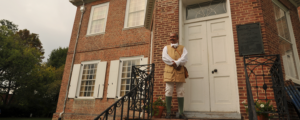
[bctt tweet=”“You have to really explore what your community is, who the people are around you, and what do they need. What are they actually looking for?” – Cordell Reaves #Why Collaborate #podcast”]
In most cases though, it comes back to us telling more complete stories to draw more diverse audiences. It’s important that when people show up, they see themselves reflected in the interpretation on site. It’s important that people feel welcome and that we’re using language and we’re using communication techniques that are going to make people feel that they’re having a meaningful experience — not just being lectured to. We’re trying to create viable experiences in communities. We’re trying to serve communities by giving them what they need and what they want. We’re trying to tell more diverse stories.
I think that’s really fantastic. What I find really interesting is you said … understanding what the community wants. You talk about having these 35 historic sites in 35 different communities, and one might think, “Well, we’re all in New York state; we’re all New Yorkers. Right? Isn’t it the same?” It’s not, is it?
No, every community is unique. We have sites that are located sometimes within 15 minutes of one another. They are very different communities. The things that people are looking for around them are vastly different. The economic levels are vastly different. The racial demographics are vastly different. I think each case has to be tailor-made.
Across the board, it’s just good history to tell a complete story. If you’re telling one aspect of a story, you’re focusing on this major hero narrative. Every other person there is just kind of a supporting cast, character. That’s not good enough. We need some equity in our approach. We need to balance the narratives. We have the great general who built that house and founded that site. Did he really built it, or did the enslaved people who were there really build it and run it? You have his wife, which is purely seen as an ornamental piece almost, and not even as a full person. What were her rights? What wealth did she control coming into that situation? What did she give up coming into that situation of marriage?
There are all these different layers that I think appeal to different people for different reasons. We need to tell all of those stories, not just one.
New York State Office of Parks, Recreation and Historic Preservation: Reaching Beyond the Regional Market
I love that. That’s really fantastic. To focus on the whole story and the complete story. Storytelling has definitely been the theme on this podcast. I really appreciate you sharing that. How are you reaching past your regional market for visitors? We talked about knowing the communities and understanding what they want. How are you reaching past those communities?
I think we’re doing things that have drawn a lot of visitors. We are participating in projects that are major projects. One example would be the African Burial Ground Project we participated in a couple of years ago. This was a community-driven effort to rebury 14 enslaved people who were found in the town of Manands during a construction project. We had major museum partners. You had municipal partners, community partners, artists, woodworkers, all working together to create a burial ceremony. To create individual burial containers. To make sure these enslaved people were buried with respect and dignity.
It was a beautiful project, and it drew people from as far away as Pennsylvania, that came for the day to participate in this reburial ceremony. It drew press coverage from and media from as far away as Russia and the United Kingdom. We had 700 people show up over two days. Many people around Schuyler Mansion State Historic Site where the lying-in-state of these individuals took place, lived in that local community and said they had never been to the site because there was no reason for them to go to the site until now. People who heard about it on the news from as far away as Philadelphia loaded up art that they wanted to donate, material that they wanted to donate, and just jumped in their car and came.
We had one artist that just showed up and said, “I have a piece of art that I want to dedicate to this effort,” because she was touched by it.
I think you draw people from outside of your region by having a good product. I mean people want to go straight to market with their product, and they don’t have a strong product. You’re not even serving your local community. You’re not appealing to broad audiences. What are you taking to market?
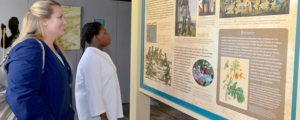
[bctt tweet=”“You draw people from outside of your region by having a good product. What are you taking to market?” – Cordell Reaves #podcast”]
They’re trying to get to tourism promotion agencies. They’re trying to get to places like I Love New York with their product. It’s not there. It doesn’t resonate with people. I think having a strong product, then it’s much easier to get that strong product to market. We reach out to our tourism promotion agents in every region asking to be on FAM Tours, motorization tours for travel riders and tour operators. We’ve been on a few of those. We also try to make sure that we’re getting good media coverage. Make sure that people know what we’re doing. Getting the word out about what we’re doing. We also form partnerships.
Over the past two years, we’ve been working with cultural institutions in the Netherlands because we have six Dutch-related sites in our collection. That partnership has been very good for us. We’re hoping there will be some tourism spillover from there too. I think the key thing is to have a good product before you try to take it to market so you don’t get written off by tourism professionals who see you have very little to offer, and then don’t come back.
You just offered so many fantastic golden nuggets of advice for our listeners. I really appreciate starting with that product, and understanding that you’ve developed the product enough. I hope listeners caught that what you said was developed with your local community. If you’re attracting your local community, then you can broaden your reach. Right? Then you know you’re telling the whole story and you have that full product.
You also offered up the importance of having media coverage and building that awareness outside of your community. Also, those partnerships and working with those tourism professionals. Even as you mentioned, the partnerships that you gain with the Netherlands and other partners like that.
You can’t be afraid to fail. Some of the things you try, some of the things I have tried have not worked. We have done FAM Tours, which lead to actual tours that our tour company developed including our sites, and didn’t fly. Wasn’t the right product. Wasn’t the right time. Wasn’t the right market. Wrong price point. Things do fail. You have to experiment and be prepared to accept that some of those things are going to go sideways, and they’re not going to produce results. You fail intelligently, you fail forward. You learn from it, and you retool. You do the evaluation after every single program. Do evaluation. See what went well. See what went wrong. Retool. Never do the exact same thing twice. Even if it’s good, it can be better.
New York State Office of Parks, Recreation and Historic Preservation: Future Outlook
Cordell, thinking about the future, what are your goals in the next three to five years as an organization?
I’d like to see us do more dialog with visitors. We’ve just been working with the International Coalition [of] Sites of Conscience to do some basic training for some of our frontline staff around switching from our standard lecture-style format tours to more of a facilitated conversation with visitors, where you allow them to drive and direct some of the discussion, and you relinquish some of the control over the tour.
I think it’s a wonderful model. I think Sites of Conscience do a great job training people in this model. I think it’s the future of what we do. People are looking to have more of a meaningful experience, especially the younger generation that comes into our institutions. If we can get them through the door, they do not want to be lectured to. If we can get them through the door, we have to allow them to express their ideas and their reactions.
For instance, if you’re showing someone a great viewshed outside of a state historic site that’s been painted hundreds of times and been preserved, like who is this preserved for? Who does this belong to? What does this say about us? What does this say about the person who preserved it? What was their economic status? Is it something that you feel belongs to you in any way? Do you feel ownership over this in any way? Even though it’s public land. All of these probing questions that allow you to dig deeper with issues like conservation and environmental justice. For those visitors who don’t want to take that journey, you can stay at the surface. You don’t have to delve deeply. For those who do, don’t deny them that opportunity to have a more meaningful experience at your site.
I think that’s a great vision, and I completely can relate to that. Getting that kind of connection with your visitors when they come in will definitely help you in years to come. They’ll refer their friends and hopefully, as they get older they’ll bring family members. I think that’s a great strategy.
Well, I’ve really appreciated our conversation and your answers to these questions have been very informative and really enlightening. We’ll hope to connect with you soon.
Thank you for having me.
Websites:
- Scarlett Rebman, Grants Officer with Humanities New York
- David Gerber, Chair of the Board of Trustees for the Museum of Disability History
- Cordell Reaves, Historic Preservation Programs Analyst for New York State Office of Parks, Recreation, and Historic Preservation
We value your thoughts and feedback and would love to hear from you. Leave us a review on your favorite streaming platform to let us know what you want to hear more of. Here is a quick tutorial on how to leave us a rating and review on iTunes!
